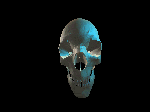


Do you know what DOS 1.0 was? It was a rough port of the magnificent CP/M from the i8080/Z80 platforms to the "new" IBM platphorm: the IBM PC.
To be honest, Digital Research had an operating system called CP/M 86 that worked on IBM PC. They also had an improved version of it called MP/M 86. Hard, to belive it could have supported a HDD and could have acted as a file server for the CP/M clients ...
As a matter of fact the new operating system was a gold mine for Microsoft because IBM hadn't specified in the contract betwixt them that the OS must be sold only to IBM..
As I already said,, the 1.0 version was made such that the CP/M programmers feel attracted by the new machine and `Operating System'.
The only thing that Microsoft made that proved to be not a vapourwave was the proper name for this program:
Disk Operating System
Although this firm claims from the 2.0 version that it is an operating system, actually it is not.
For the second version Bill Gates found the old CP/M scheme (user[0-9])
to be insatisfactory. So, what did this Bill think then?

|
 hierahically filesystem.
hierahically filesystem.
The pie that he had cooked for us (...) is our daily OS now.
At his time MS-DOS was excellent, but Bill's crime was that he had continued to develop new versions of it; in spite of the fact that Microsoft and IBM worked togeter (not for a long time) for a better operating system: OS/2.
Together with the i80[34]86 processor, the DOS could not satisfy anybody because of the memory limitations, because the lack of multitasking and many other small things, that come implicitly with a real OS.
The first extension to the ugly DOS was the ugly Windows with several
(unsuccesful) versions: Windows/286, Windows/386, and the outstanding
Windows 3.0 -- in fact only a graphical interface.
Together with it came the first attempt to make DOS run in the 386's
Protected Mode: the pair himem.sys/emm386.exe
The second step of Microsoft was Windows NT, but this is another story of how a
